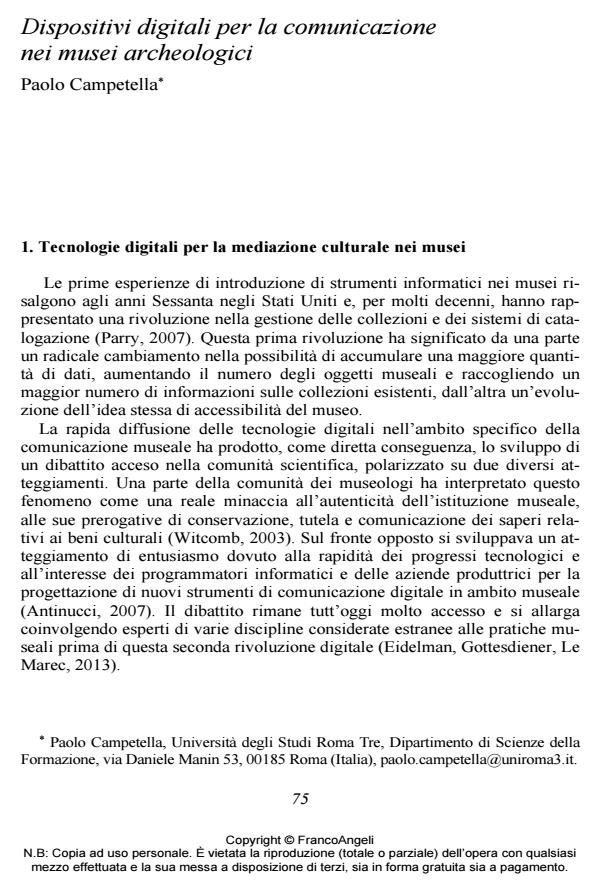ICTs as cultural mediation tools in archaeological museums
Journal title CADMO
Author/s Paolo Campetella
Publishing Year 2017 Issue 2016/2
Language Italian Pages 16 P. 75-90 File size 165 KB
DOI 10.3280/CAD2016-002007
DOI is like a bar code for intellectual property: to have more infomation
click here
Below, you can see the article first page
If you want to buy this article in PDF format, you can do it, following the instructions to buy download credits

FrancoAngeli is member of Publishers International Linking Association, Inc (PILA), a not-for-profit association which run the CrossRef service enabling links to and from online scholarly content.
The use of digital technologies is widespread in collecting, processing and presenting data derived from archaeological investigations, although it’s not yet clear how much the use of technology has influenced and changed the communications adopted in archaeological exhibitions. The research was aimed to investigate how ICTs are integrated as cultural mediation tools in archaeological museums. An analysis guide, inspired by the communicational model of Pignier and Drouillat (2004) for the analysis of web sites, was applied to two archaeological on site museums: the Grenoble-Saint Laurent Archaeological Museum and the Section dedicated to the Jupiter Temple in the Capitolini Museums. The data analysis identified some indicative characteristics of cultural mediation tools, whether analogue or digital, which could show the application of specific communication strategies. The research offers the possibility to highlight the relationship among devices in the archaeological exhibition to better understand how their integration can affect the meaning making processes of visitors.
Keywords: Archeological museum, cultural mediation, ICT, communication strategy, exhibition.
- Vers une communication systématique dans les musées archéologiques. Le rôle des outils numériques : caractéristiques et modèles Paolo Campetella, in Culture & musées /2018 pp.196
DOI: 10.4000/culturemusees.2104
Paolo Campetella, Dispositivi digitali per la comunicazione nei musei archeologici in "CADMO" 2/2016, pp 75-90, DOI: 10.3280/CAD2016-002007